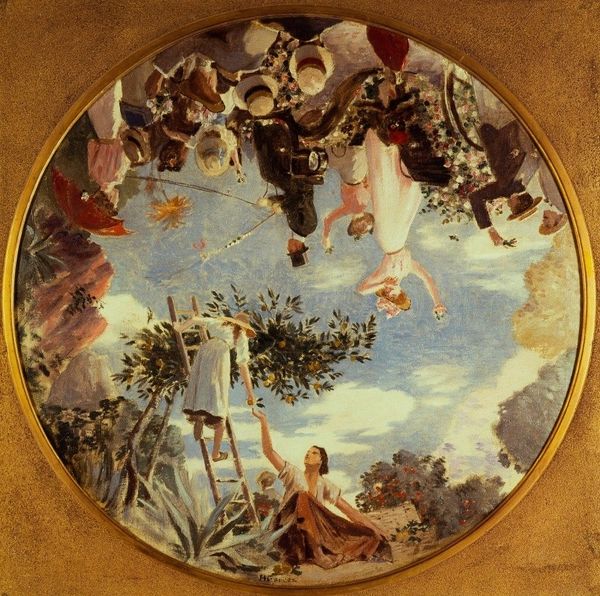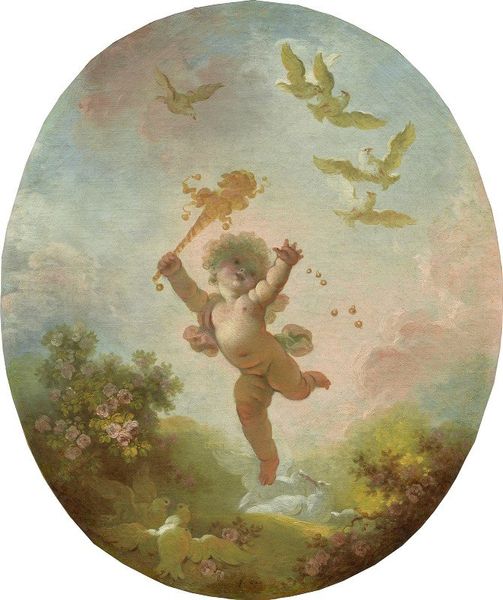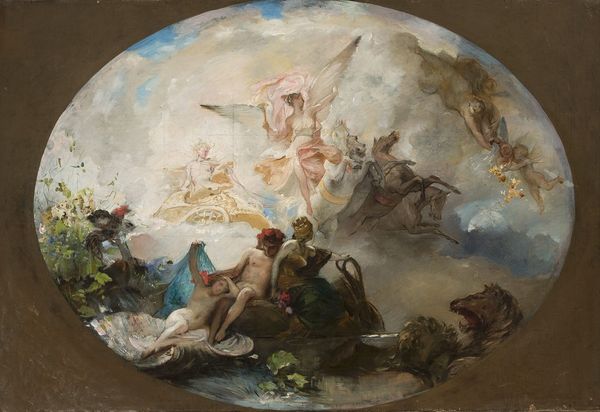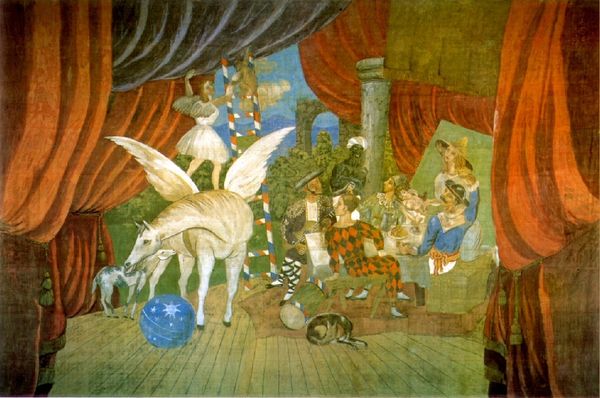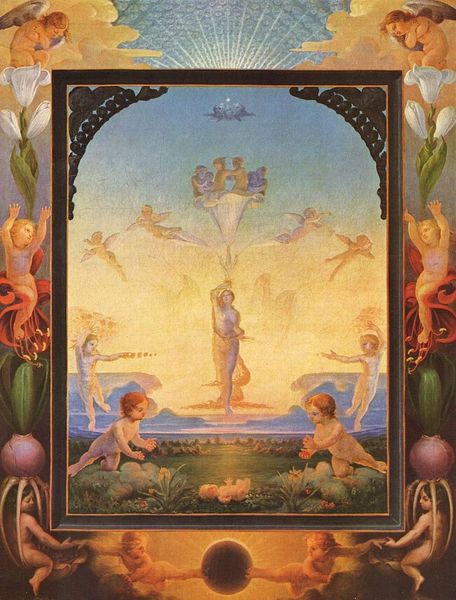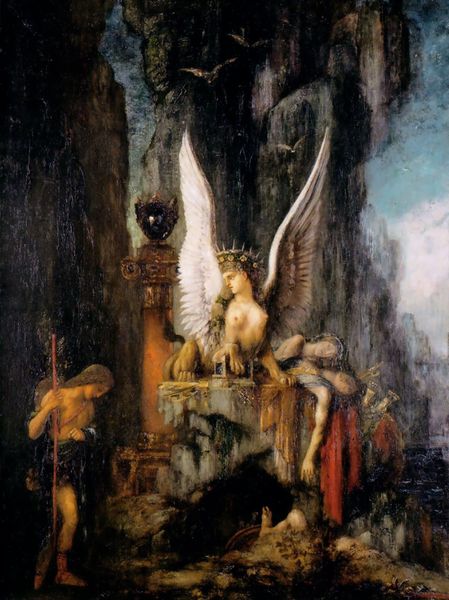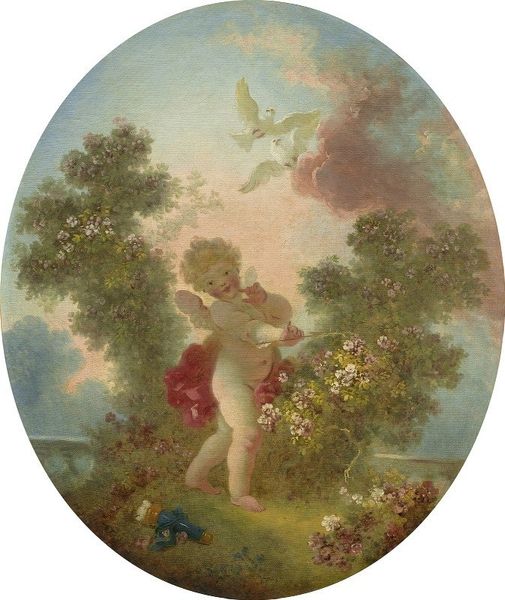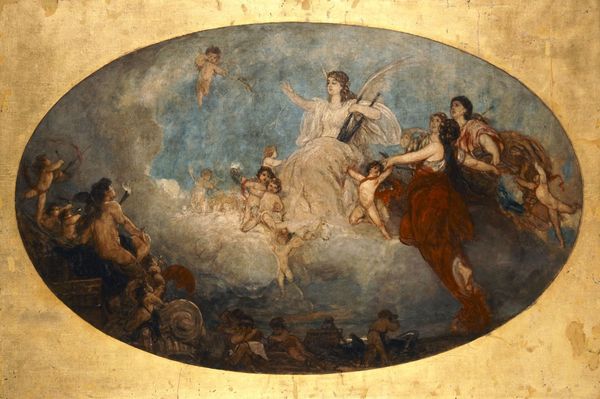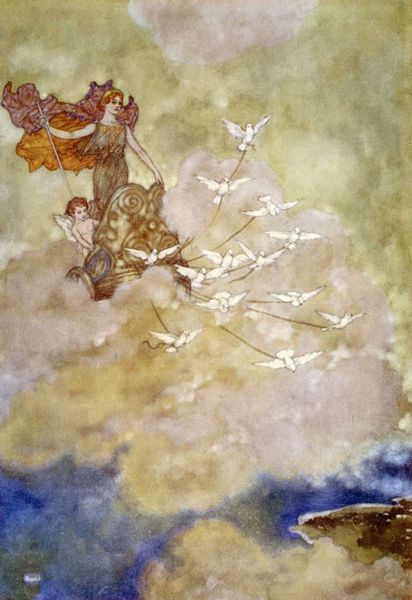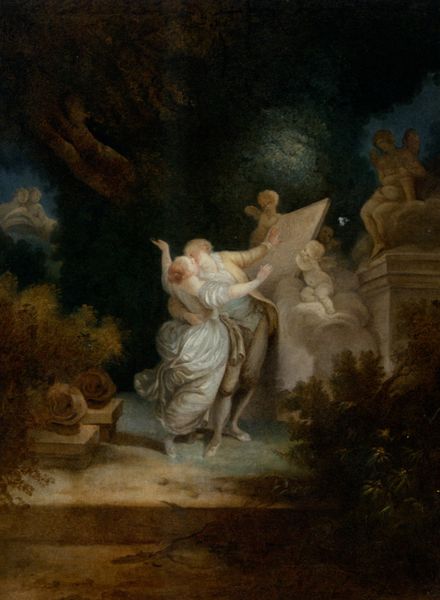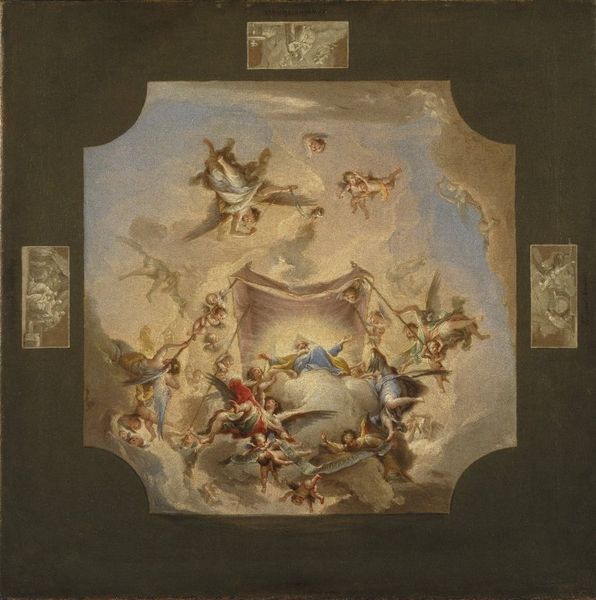
painting, gouache, watercolor
#
gouache
#
fairy-painting
#
allegory
#
narrative-art
#
painting
#
gouache
#
sculpture
#
fantasy-art
#
figuration
#
oil painting
#
watercolor
#
romanticism
#
watercolour illustration
Copyright: Public domain
Curator: Ah, yes, let's talk about "Puck." Richard Dadd created this watercolour and gouache painting. It seems to depict a scene of ethereal enchantment. What is your immediate reaction to the artwork? Editor: My first thought is that it feels very theatrical. The use of materials creates a dreamlike haze, and there is clear evidence of skillful craftsmanship. It’s interesting how the artist mixed watercolour and gouache. Curator: Indeed. Dadd’s biographical narrative is incredibly relevant here. Considering his tragic mental health and institutionalization, how might that influence our understanding of this idyllic fairy scene, this liminal space of altered consciousness? Editor: Absolutely. The use of gouache gives solidity to these beings, challenging the Romantic notion of gossamer wings and fragile fantasies. How can we ignore his access to artisanal practices that would have provided him some relief through labour? Curator: That's very astute. Furthermore, I'm drawn to how Dadd's “Puck” seemingly interacts with questions of class and access within the Victorian era, mirroring similar dialogues that appear, say, in art created by women or people of colour in later historical periods. Editor: The framing is crucial here. It's all about the edges: how it is contained and presented dictates how and why this world functions. And those materials... the luminous pigments elevate the painting beyond mere craft. Curator: And perhaps even a transgressive rebellion within that craft. Dadd channels an obsessive quality into rendering the fairies, a radical move for that era to allow these fantasies into broader cultural awareness. Editor: A tangible dream, brought to life by skilled labor, not merely imaginative reverie. That changes the interpretation. Curator: It undeniably enriches our dialogue around art history and mental health. It compels us to remember those who challenged the restrictive social norms that pervaded their identities, while providing art historical inspiration for further radical change today. Editor: Dadd has shown us the potency of labour within artmaking and how to see madness, brilliance and society’s restraints. A lasting comment, if I do say so myself.
Comments
No comments
Be the first to comment and join the conversation on the ultimate creative platform.

